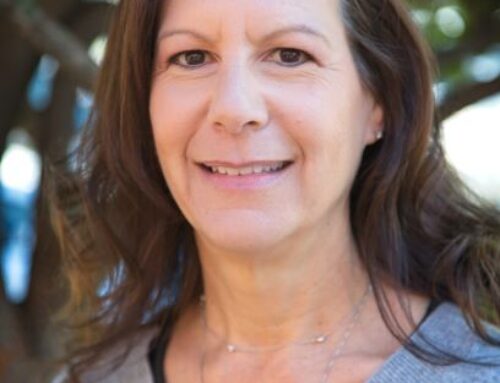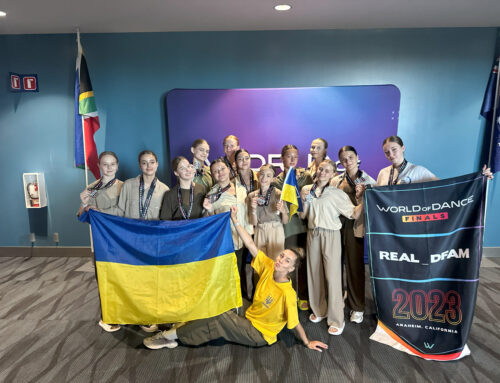El Toro fifth graders share how COVID-19 impacts their lives and learning
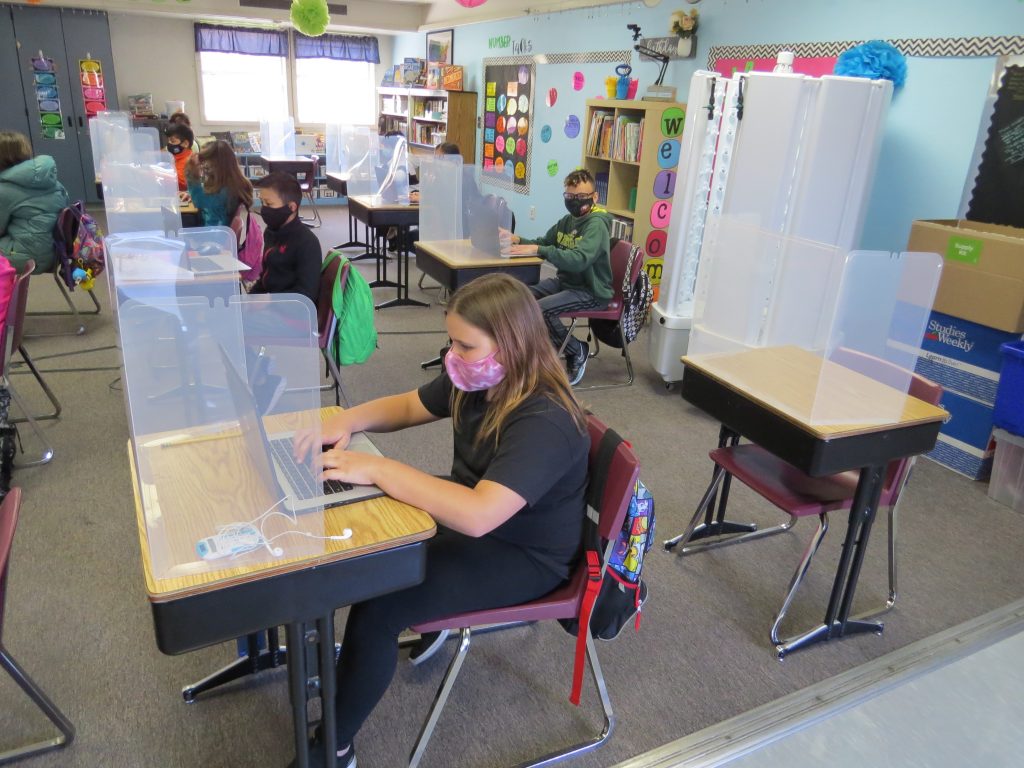
Photo by Marty Cheek — Fifth grader Synthea Mingione works on her laptop in teacher Traci Golubock’s classroom at El Toro Health Science Academy.
By Marty Cheek
The decline of the dangers from COVID-19 means public health restrictions are loosening in California. In the aftermath of this historic pandemic, young people coming back to in-person learning at Morgan Hill public schools face a brave new world in their education.
 After 13-months away from being physically present in classrooms, many students must now adjust to the new rules of returning to their desks as local schools re-opened April 12.
After 13-months away from being physically present in classrooms, many students must now adjust to the new rules of returning to their desks as local schools re-opened April 12.
The kindergarten through sixth-grade students at El Toro Health Science Academy quickly adapted to the protocols of safely stepping back on campus. Parents of about 300 of the school’s 500 students decided their children would return to in-person learning. Wearing masks, in the morning they form lines outside and staff use a special device to check their forehead for a high temperature. Once they pass the health screening, they proceed to water and soap dispensers in the hallways to wash their hands. Blue electricians tape form crosses in the shape of an X outside classrooms where students line up six feet apart.

Photo by Marty Cheek
Devan Bowman Evans in fifth grade teacher Traci Golubock’s classroom at El Toro Health Science Academy.
The students in Traci Golubock’s fifth-grade classroom found the layout has changed from the more typical classroom they knew before the pandemic uprooted their education in mid-March 2020 when COVID-19 forced schools to close. By federal public health regulations for the coronavirus, their desks are set four-feet apart and clear plastic shields on the desktops guard against the potential spread of germs. The students know the rules prevent touching, shaking hands or high-fives.
Technology has also transformed the classroom. A digital camera in the back allows Golubock’s students who are distance learning to join the lessons through Zoom video-conferencing. The faces of the at-home students are projected on a whiteboard at the front of the class and their voices can be broadcast through a sound system. The students’ weekly schedule has also changed because of COVID-19’s impact. The students are divided into two groups called “cohorts.” Cohort A students come into the classroom Mondays and Tuesdays. Cohort B students are in class Thursdays and Fridays. Both groups distance learn Wednesdays. Class runs from 9 a.m. to noon.
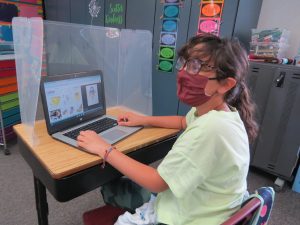 Thursday, April 5, Golubock’s class welcomed a Morgan Hill Life reporter paying a visit to discover how students must now deal with the pandemic’s restructuring of their education. He was introduced by El Toro Principal Darren McDonald.
Thursday, April 5, Golubock’s class welcomed a Morgan Hill Life reporter paying a visit to discover how students must now deal with the pandemic’s restructuring of their education. He was introduced by El Toro Principal Darren McDonald.
“We are talking about history today — history in 2021. The year 2020 was kind of a wild year,” McDonald told the students in introducing the reporter. “We’re making history now because never before have we had these things.” He referred to the plastic shields, hand-washing, masks, and Zoom video technology. “Never before have we had these things to keep you safe while you’re being educated.”
The students shared their own thoughts and experiences in being forced by COVID-19 to so abruptly change their lives and learning.
Jadon, 10, described the difficulty of having to suddenly adjust to learning away from the classroom environment he had been used to in previous grades.
“It was kind of hard focusing at home, and it still is,” he said. “I’m in my room so I have a lot of things that can distract me. The technology was also kind of frustrating. After a while, I got used to it, but when we first started we didn’t know how to (do) Zoom.”
He learned quickly and now runs his own Zoom meetings to keep connected with his classmates by doing scavenger hunts and playing games online.
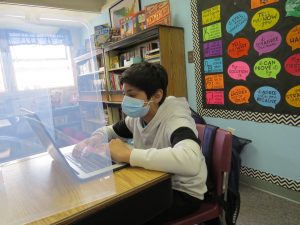 Technology has also been a challenge for Carly, 11. When the pandemic started during her time in fourth grade last year, she was lucky her mother had a computer she could use most of the time.
Technology has also been a challenge for Carly, 11. When the pandemic started during her time in fourth grade last year, she was lucky her mother had a computer she could use most of the time.
“But when fifth grade came along and I got my own Chromebook, me and my mom were confused about that,” she said. “We finally managed to log on and it took a while to get used to it. I kind of get a little stressed sometimes because I feel a little overworked or the work gets a little too hard. But luckily I have some people who like to help me out.”
She especially missed the chats with friends on campus and prefers to be in the classroom environment than distance learning. “It’s way easier,” she said.
Kevin, 11, loves playing soccer and it was difficult to give up the sport when COVID-19 prevented athletic games. At first his team had “practices” on Zoom but that didn’t work out too well as WIFI was not always reliable, he said.
“It was really weird because we didn’t do anything that involved soccer,” he said. “I live in an apartment and I don’t have a basement or garage so I had to do (Zoom) in the living room. I didn’t feel very comfortable there because the TV was on and there was too much noise. The Internet would go out at home. It was always lagging and going out . . . I feel much more comfortable in school.”
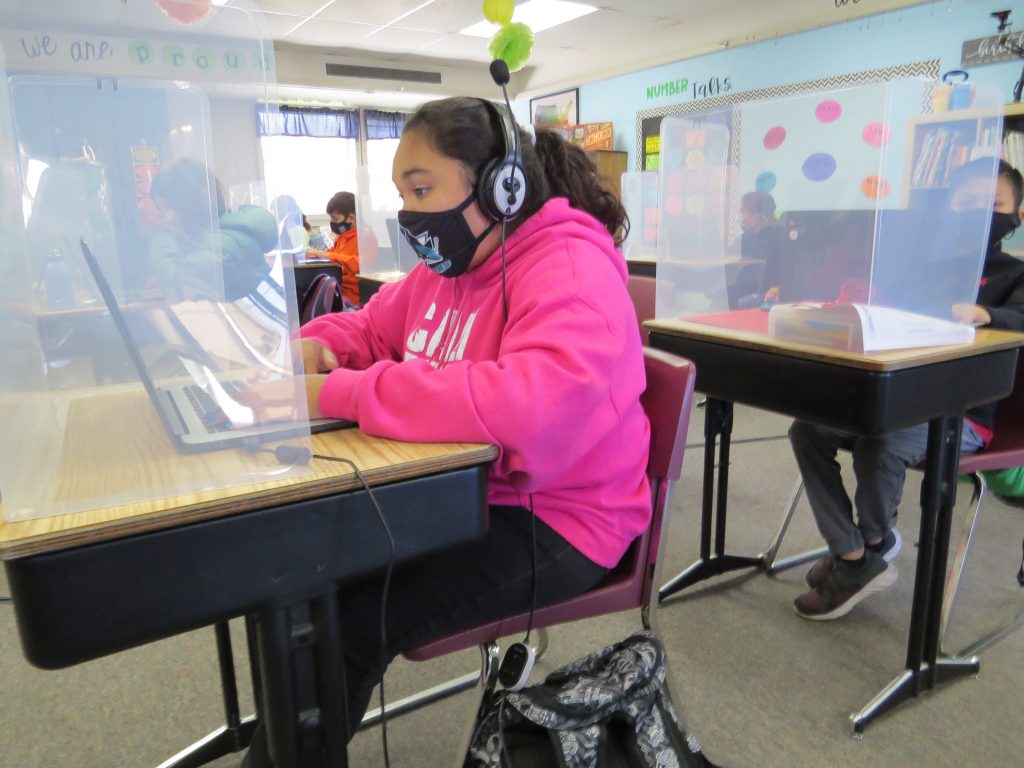 For Isaiah, 10, coming back to in-person learning at El Toro has been “awesome” and “cool” because it helps him focus better when there are not as many distractions.
For Isaiah, 10, coming back to in-person learning at El Toro has been “awesome” and “cool” because it helps him focus better when there are not as many distractions.
“For online school, I go to my aunt’s house and there are so many kids there and it’s always loud and on the Internet I can’t always pay attention,” Isaiah explained.
Golubock polled her students about distance learning. The majority said being in the classroom helps them get their work done twice as fast because they can concentrate much more easily. Students can also help each other more effectively in the classroom environment.
Justin, 10, said the pandemic provides lessons for humanity in reminding us how everyone’s life is interconnected and the decisions we make and actions we take can affect other people. As an example, walking to recesses students want to interact more but need to stay six feet apart now.
“What impacts everyone else is the fact that you can’t go up and hug other people or do high-fives or interact with people,” he said.
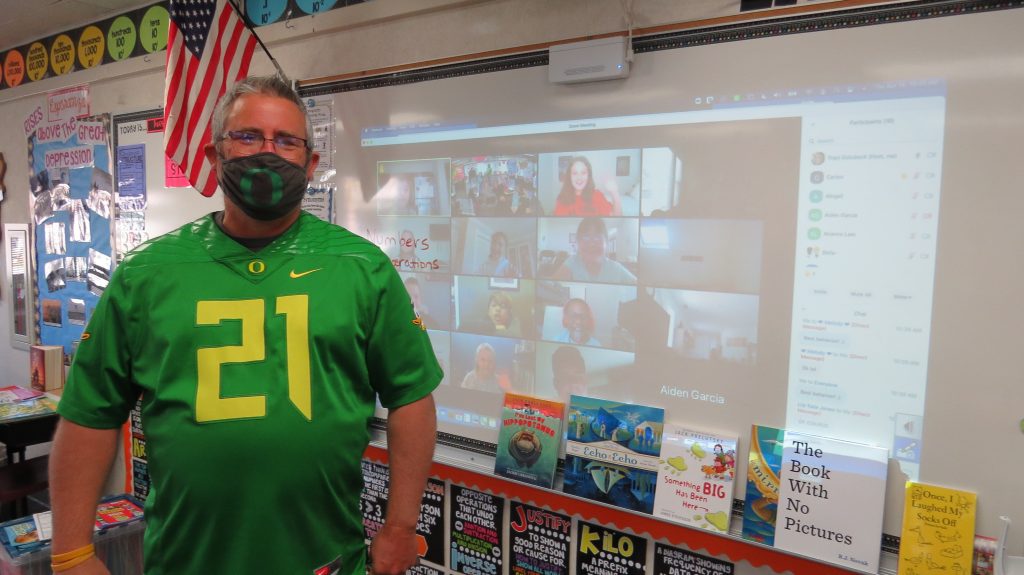
Photo by Marty Cheek — Principal Darren McDonald visits as in-person learning began April 12.
Charlotte, 11, agrees with Justin that COVID-19 has changed the world of education and what students can do to learn their lessons and have fun with friends. But there are still ways to enjoy life.
“It’s definitely hard trying not to hug everybody and doing high-fives and stuff,” she said. “I live in this neighborhood with a park in it and everybody goes outside and that’s good because they feel safe outside.”




